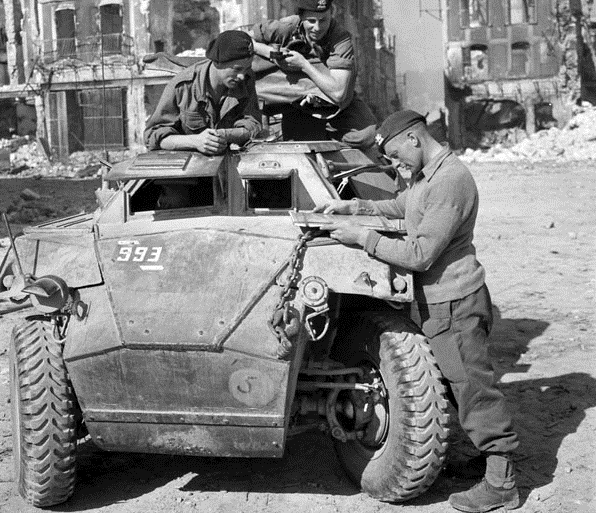
| Year | 1943 (Mk. I) 1944 (Mk. II) |
| Vehicle Type | [@type] |
| Origin & Designer | [@designer] |
| Numbers Produced | 1.698 (Mk. |
| Crew | 3 (Commander, Gunner & Driver) |
| Main Armament | 1 x .303 Bren or Vickers K Machine Gun (PLM Mount Mk. I) |
| Main Armament | [@sponson_traverse] |
| Elevation | [@elevation] |
| Turret Traverse | [@turret_traverse] |
| Gun Traverse | [@gun_traverse] |
| Gun Mount | [@gun_mounts] |
| Maximum Range | [@maximum_range] |
| Armour Penetration | [@armour_penetration] |
| Gun Sight | 2.13m |
| Secondary Armament | [@secondary_armament] |
| Smoke Discharger | [@smoke_discharger] |
| Ammunition Carried | 7000 x .303 |
| Height | 2.13m |
| Width | 1.87m |
| Length | 3.83m |
| Combat Weight | 3.084 kg |
| Ground Clearance | 0.24m |
| Fording Depth | [@fording_depth] |
| Trench Crossing | [@trench_crossing] |
| Obstacle Clearance | [@obstacle_clearance] |
| Climbing Ability | 18° |
| Radio | No. 19 Set |
| Armour | Hull Front: 14mm. Hull Sides: 9mm. Hull Rear: 9mm. Hull Top: 9mm. Hull Bottom: None. |
| Engine | Rootes 6 Cyl (Petrol) |
| Transmission | 4 Forward & 1 Reverse |
| Maximum Road Range | 320 km |
| Maximum Cross Country Range | [@maximum_cross_country_range] |
| Maximum Water Range | [@maximum_water_range] |
| Maximum Road Speed | 100 kph |
| Maximum Cross Country Speed | [@maximum_cross_country_speed] |
| Maximum Water Speed | [@maximum_water_speed] |
| Variants | Mk.II: Increased armour and improved transmission. |
| Notes | As the war went on the need for scout cars could not be met by Daimler, so Humber developed a model along the same lines as the Dingo. It mounted a machine gun which was operated from inside the crew compartment and carried a crew of two with room for three at a pinch. The vehicle was used in the same way as the Dingo and served as a reconnaissance and liaison vehicle in armoured divisions. |